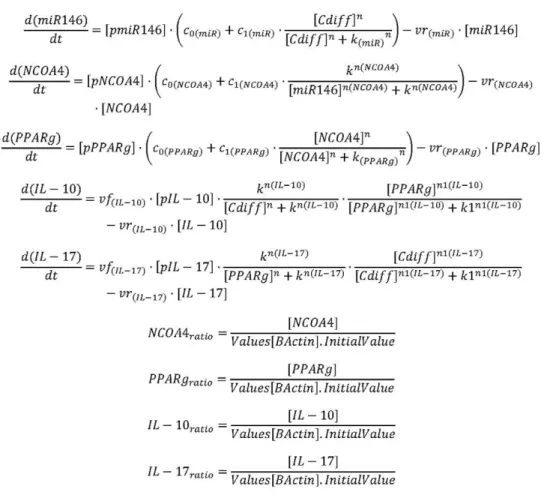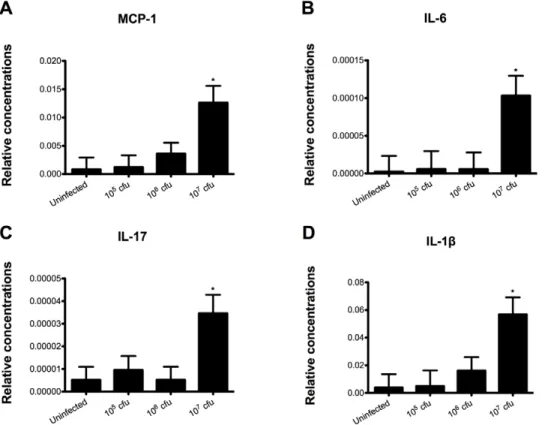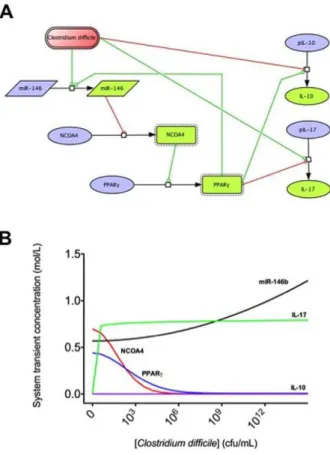Modeling the role of peroxisome proliferator-activated receptor γ and microRNA-146 in mucosal immune responses to Clostridium difficile.
Texto
Imagem




Documentos relacionados
Because we found increased CD4+ T cell infiltration in PPAR c -deficient T cell recipients in a previous study, we used a cytokine antibody array to detect cytokine secretion
RESULTS: Hepatic mRNA expression of both peroxisome proliferator-activated receptors was significantly lower in hepatitis C virus-infected subjects with and without
We observed a significant increase in the mRNA expression levels of IL-12, IFN-y, IL-17 and IL-10 (Figure 2), suggesting that these cytokines play a role in the
The expression of four transcription variant of peroxisome proliferator- activated receptor gamma gene ( PPARG ) (XM_015292931.1; XM_015292932.1; XM_015292933.1 and NM_001001460.1)
Proteins belonging to the NFAT (nuclear factor of activated T cells) family of transcription factors are expressed in most immune cell types, and play a central role in
In the present work, N-acetylcysteine (NAC), ascorbic acid (AA), some nonsteroidal anti-inflammatory drugs (NSAIDs) and peroxisome proliferator-activated receptor gamma (PPARγ)
as this study intends to insert Portugal into the circuit of the literature on academic tourism and this is a country that does not have the appeals of s’s offered by the leaders
Minimal expression and activity of PPAR c was detected in mock-infected and infected PPAR c VillinCre+ mice compared to littermate control PPAR c VillinCre- and wild-type (C57BL/6)